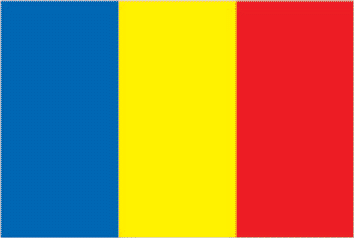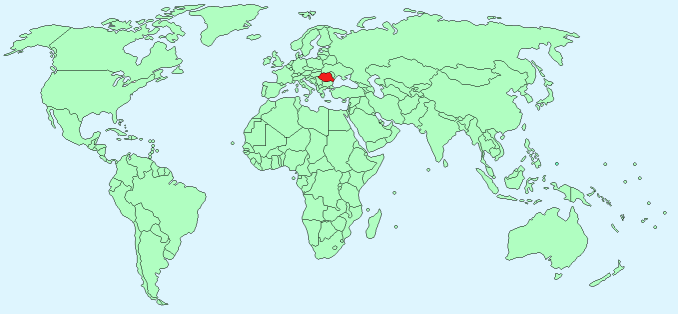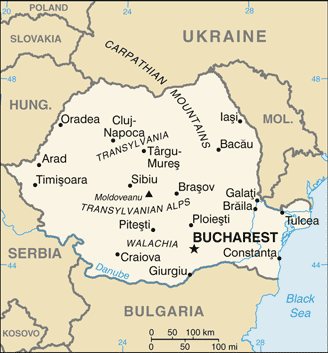Romania


Continent – Europe
Region – Eastern Europe
Size – 238,391 km²
Geography – Mountains, plateau and plains
Language – Romanian, Hungarian, Romany
Religion – Eastern Orthodox 81.9%, Protestant 6.4%, Roman Catholic 4.3%, other 7.4%
Monetary Unit – Romanian Leu
Natural Resources – petroleum (reserves declining), timber, natural gas, coal, iron ore, salt, arable land, hydropower
Agriculture – wheat, corn, barley, sugar beets, sunflower seed, potatoes, grapes; eggs, sheep
Industry – electric machinery and equipment, textiles and footwear, light machinery, auto assembly, mining, timber, construction materials, metallurgy, chemicals, food processing, petroleum refining

Neighbouring Countries – Bulgaria, Serbia, Hungary, Ukraine, Moldova
Population – 21,666,350 (2015 estimate)
Population Growth Rate – -0.3%
Average Life Expectancy – 74.92
Capital City – Bucharest (population 1,868,000)
Highest Mountain – Moldoveanu (2,544 m)
Longest River – Danube (1000 km in Romania)
Climate – Hot, dry summers – 20°C to 26°C, cold winters – -2°C to 10°C
Yearly Rainfall – 65 cm (approx)
Plant Life – Swiss pine, Norway spruce, fir, beech, durmast, oak, larch, ash, elm, poplar, willow, dianthus, grasses, Carpathian bellflower, gentian, violets, foxglove, viola, lily, pasque flower
Animal Life – Bears, wolf, red deer, chamois, wild boar, roe deer, lynx, wild cat, lizards, toads, frogs, snakes
Bird Life – Bee eater, European roller, pigmy cormorant, geese, grebe, terns, gulls, ducks, sandpiper, ibis, bittern, pelican, wagtail, lark, sparrow
Harvard Reference for this page:
Heather Y Wheeler. (2015). Romania. Available: https://www.naturalhistoryonthenet.com/Facts_Figures/Country_Facts/romania.htm. Last accessed Tuesday, July 19, 2016
Facts and Figures Pages
